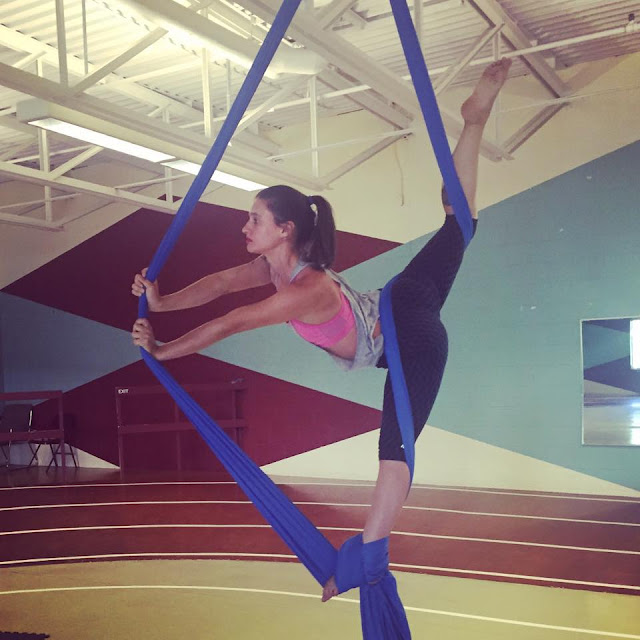5 Tips On Climbing Aerial Silks
I've MOVED!! Check out this post and more at my new website: AerFit.ca !!
If you want to improve your aerial climb, you're not alone! Climbing was one of the hardest things I learned and sometimes still struggle with. Not only does it take a fair amount of strength and conditioning, but there is totally a huge mental hurdle to get around. Your muscle memory isn't quite there yet and so you rely on your co-ordination and understanding of the mechanics. Once you've done it several times, your muscles will remember and it will become almost second-nature. At that point you can start exploring different movements when climbing such as arching your back etc... you can get creative with it. For now though, you just want to be able to master the basics... and get more than a foot off the ground..
So here are my tried-and-true top 5 tips for improving your aerial climb... whether you are a brand new beginner or a seasoned pro!
Reach up high!
Reach your arms up as high as you can while still maintaining a strong grip. This allows you to get as much height as possible, conditions your shoulders and grip, and reminds you to use those legs!
Lift your legs HIGH.
Make sure when you are ready to wrap the fabric around your foot, you have brought your knees up towards your chest and lifted your legs as high as possible. As a beginner this is especially important, as your upper body strength is not going to be there to give you the boost- so you need to use those strong quads to PUSH your body up (as opposed to pulling up with your arms!) This is waaaay easier and saves so much energy. Don't forget to really flex that bottom foot, as it is basically a shelf you are creating to step on with your other foot.
Train Your Grip
I know you wanted some magical tip that would make you awesome at climbing right off the bat- but the reality is you must work for it. This includes training your grip. A stronger grip means a safer practice. It also helps with endurance as hands tend to tire easily when we aren't used to using them like this. Get yourself a grip trainer and use it! I personally love multitasking.. on the phone at work? Grip train! Watching a movie? Grip train! Waiting for your taxi? Grip train!! (You get the picture...)
More CORE
Once again, more conditioning! Core might not seem like the obvious thing to train here but trust me.. it's so important. Your core is your main stabilizer. A strong core will reduce your risk of injury and keep you safe up there in the air. Also, lifting your legs up high during a climb relies on your deep lower abdominal muscles. Exercises like leg lifts & raises, hollow body, and oblique training as well, will help you develop these muscles and ultimately improve your aerial climb.
Pull Ups!
Aaaand one more conditioning tip! The pull up is the best exercise you can do when training for aerial dance. It works all of the muscles you need to pull and hold yourself up on the fabric; including shoulders, arms, grip, lats, etc... Invest in a pull up bar at home and do as many as you can.You can even reverse train pull ups by starting at the top and lowering yourself down until you have built up enough strength to do full ones.
Ultimately the best thing to do is keep practicing! Climbing can take a long time to learn, some students take weeks or even months to get the hang of it while others can master it in just a few classes. Everyone is different and it is never a competition. Don't risk injuring yourself by pushing yourself too hard- but also don't get frustrated if you don't get it right away. Do the work and you will get there!
Also, remember that 1 million tips cannot substitute for a good aerial coach. Find a local coach who can really show you the ropes- pun totally intended - and you will be flying in the air in no time at all.
Samantha






































0 comments: